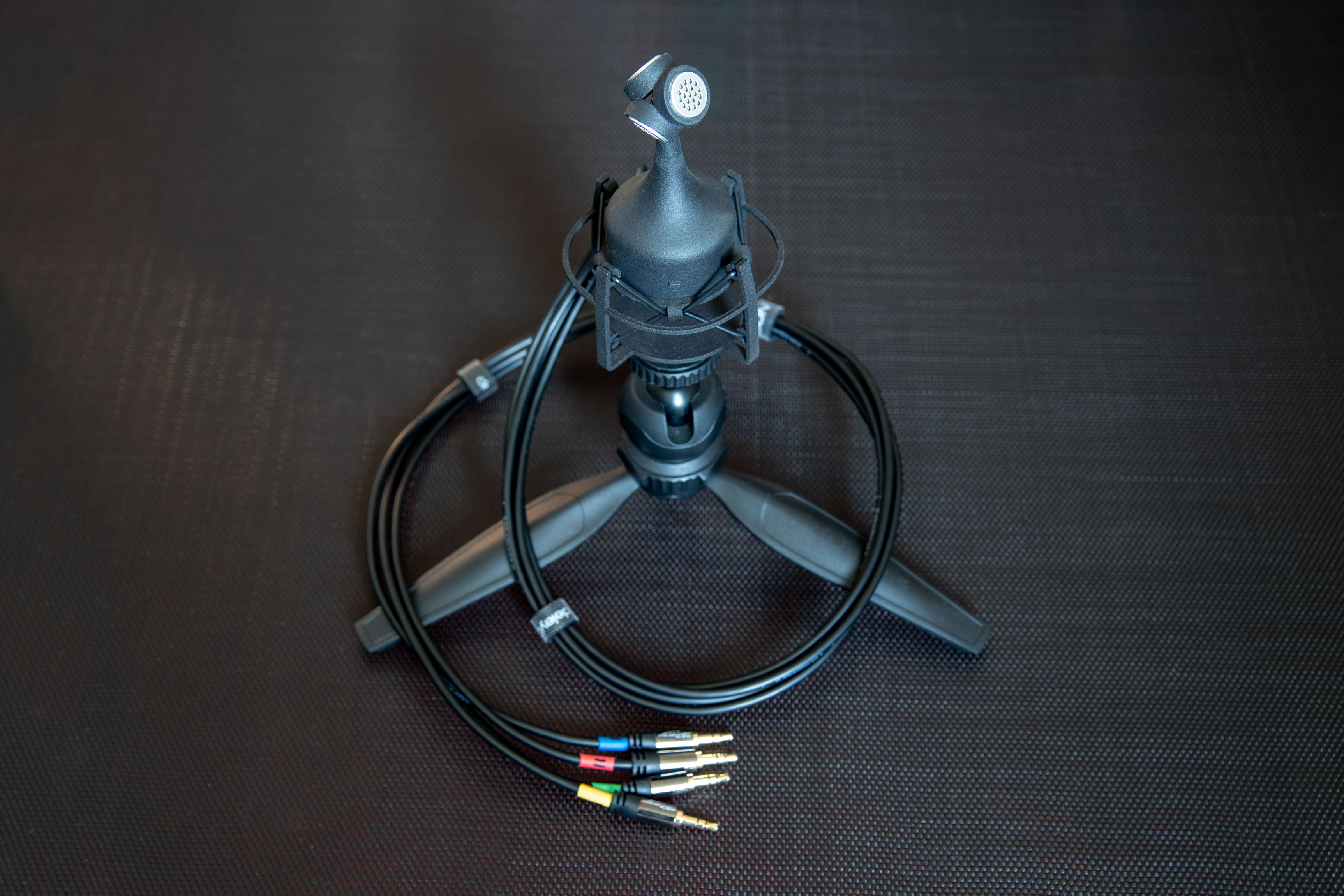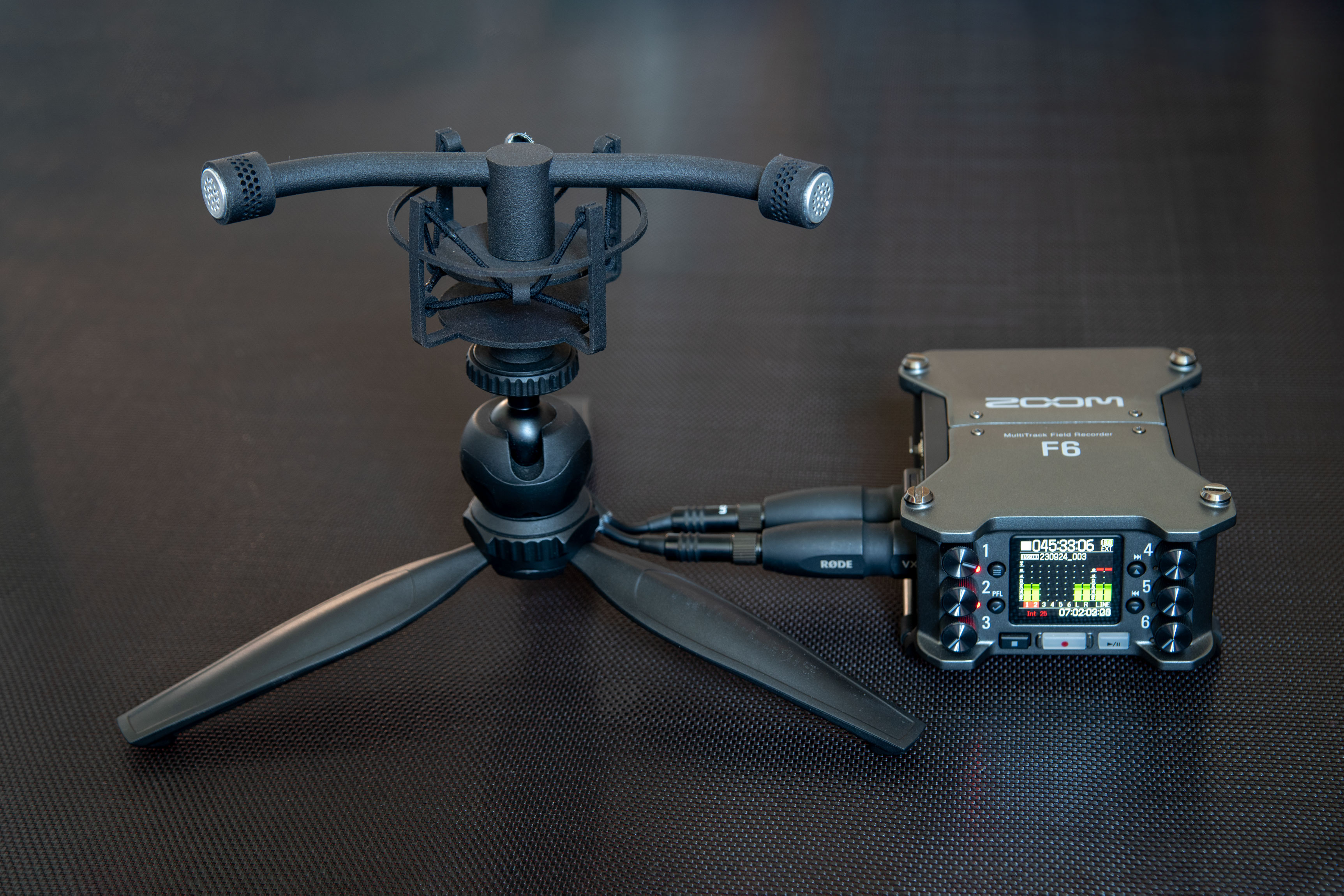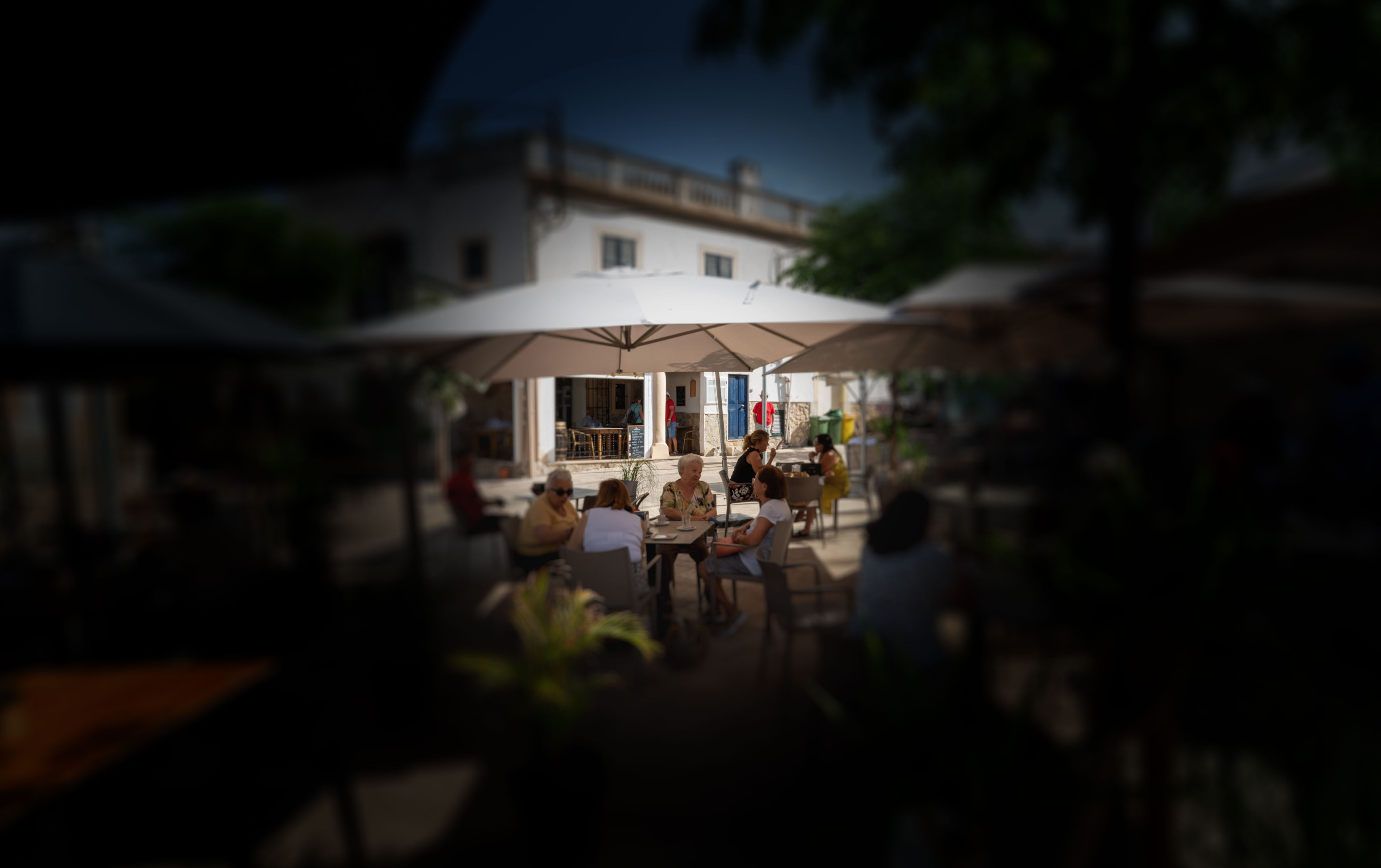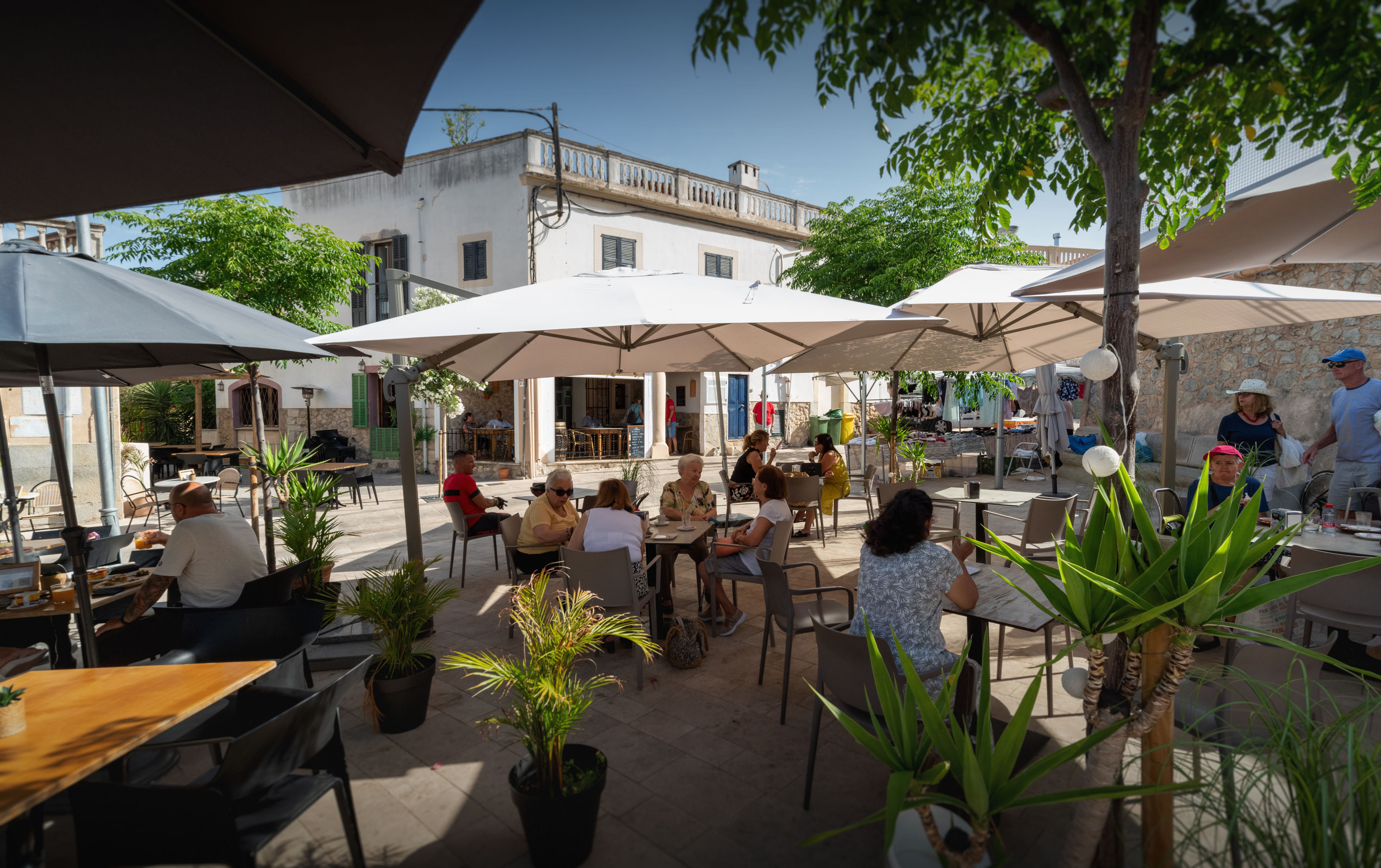History of the “Aurochs”
In lockdown early 2021 I did some research on ambisonic microphones and in the end I wanted to have one for experiments. Ambisonic mics are quite expensive except for one in the market which didn't match my quality needs. As a media designer I have some 3D skills, so I decided to make my own.
At that time I already possessed some lavalier mics with very decent non-directional capsules made by Primo Microphones. So I checked if this company had cardioid capsules with good specs which they do. On eBay I purchased 6 EM204 capsules from a guy in NYC and integrated them into my 3D-printed housing. The ambisonic mic turned out nicely. My Zoom F6 provides good preamps and enough channels and after the lockdown I was happily field recording in Berlin and the woods around.
For the two spare EM204 capsules I made a 3D-model for an ORTF-mic to be used in field recording, too.
2 years later: Photography is part of my life and work since more than 30 years, but except of animation I had never been much envolved in video production. Since shooting in 4k became affordable, my interest was rising. My partner had bought a BMPCC 4k which I had access to and so I started learning.
January 2023 I shot a Lumix GH5 on eBay for only 500 € in mint condition and was impressed what I got for that money. Rigging the GH5 up for handheld shooting, I remembered my self-made ORTF mic. In my audio bag I luckily found an adapter to join the mono channels to TRS-stereo, attached it all to the camera cage and – wow, this sounded great – a detailed, wide soundfield, so close to how you really hear your environment.
Wind noise was still an issue, but I found out that Rode's dead cat for small condensers fitted perfectly (Rode WS8). I highly recommend you to order them if you want to shoot with the ORTF outdoors. This first ORTF prototype never left the camera until recently. I thought about optimizing options for the ORTF mic and the idea for the “Aurochs” started to shape.


General thoughts on stereo audio for video
Maybe it is because I came to video a lot later than to recording audio. I seem to have a different approach to sound than most videographers. More than 90% of gear reviews by videographers for audio seem to rate mics on how well they exclude surrounding sound sources. My opinion: If you only use shotguns it is like having a 135 mm focal length as your go-to lens and try to do every shot with only that long lens.
While shotgun mics make sense for interview situations, in other situations for my perception something is missing. In most YouTube videos in those scenes you only hear music or voice-over, but why? This is not so much the case in a cinema movie, right? Ok, for obvious reasons you can't use on-camera mics for a drone shot. But for any wider shots indoor and outdoor, landscapes, forests, street scenes etc.?
My guess: There are 2 main reasons. First reason: Environment in industrialized countries is extremely noisy. Our brains are capable of filtering away most of it. But this internal neural filter seems to stop working as soon as you listen to a recording of what you had heard before in real life. A lot of loud and distracting noises arise from traffic and other sources which you can't control. In the recording you will hear it all. Second reason: Videographers don't have the equipment to record detailed ambient sounds in stereo. Well – now you can. Make the truth audible. Go new ways to shape your sound. Experiment.
In my perception it is a plus if you can adapt the width of sound recording to the focal length of the lens. You can create tension if you record something hidden left or right out of the field of view. There are lots of opportunities to play with.
The ORTF will stay firmly on my standard go-to rig. Before I buy a shotgun mic, I'll use one or more Zoom F2 recorders with decent lavalier microphones for interviews etc. and sync these additional tracks in post production. Then I have the option to dynamically change between focused (Lavalier) and wide (ORTF).

